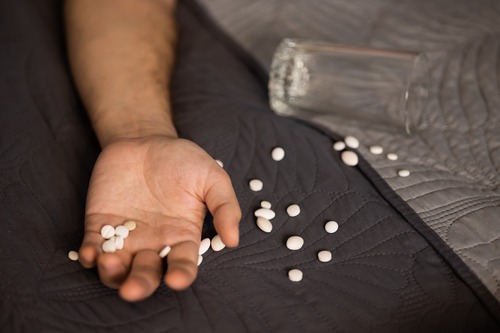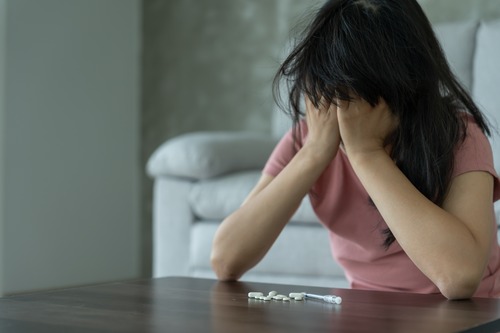At Carolina Recovery, we are dedicated to helping individuals overcome addiction and achieve lasting recovery. Our fully accredited centers provide personalized treatment plans tailored to each person’s unique needs. With a compassionate team and a range of services, including medication-assisted treatment and behavioral therapy, we support our clients every step of the way. Whether you’re seeking help for yourself or a loved one, Carolina Recovery is here to guide you toward a healthier, sober life.
Opioid dependency is a growing public health issue that affects individuals, families, and communities across the country. What often begins as the use of prescribed opioids for pain can quickly turn into a pattern of misuse, dependence, and addiction. Recognizing the signs early is critical. Without treatment, opioid use disorder can lead to serious health risks, including overdose and long-term physical and psychological harm.
In this blog, we cover the key signs of opioid dependency, how it progresses, the risks of leaving it untreated, and how seeking treatment at a Raleigh opioid rehab center like Carolina Recovery can provide a clear path to recovery.
What Is Opioid Dependency?
Opioid dependency is a medical condition that can affect anyone using opioid drugs, whether prescribed or illicit. It develops over time and often starts with the use of prescription opioids for pain relief.
Defining Opioid Dependency
Opioid dependency occurs when the body adapts to regular opioid use and becomes reliant on the drug to function normally. This dependency can result from taking opioids as prescribed or from opioid misuse. Over time, a person may need higher doses to achieve the same effect. This process is known as tolerance and it often leads to physical and psychological dependence.
Difference Between Dependency and Addiction
Opioid dependency refers to a physical condition where withdrawal symptoms appear if the drug is stopped. Opioid addiction includes dependency but adds compulsive drug use and loss of control. Both fall under the broader category of opioid use disorder (OUD), as classified in the Diagnostic and Statistical Manual of Mental Disorders. OUD is a serious form of substance use disorder that requires medical treatment.
How Opioids Affect the Brain
Opioids bind to opioid receptors in the brain and reduce the perception of pain. At the same time, they trigger the release of dopamine, which creates a feeling of pleasure. This effect reinforces opioid use and can lead to opioid abuse. Continued use changes how the brain functions, making it difficult to stop without help.
Key Signs and Symptoms of Opioid Dependency
Opioid dependency often develops gradually, but certain signs can indicate a growing problem that needs medical attention.
Physical Symptoms
Physical signs are often the first indicators. These may include pinpoint pupils, drowsiness, slowed breathing, and constipation. When the drug is not taken, opioid withdrawal symptoms can appear, such as sweating, chills, nausea, shaking, and muscle pain. Increasing the opioid dose to avoid withdrawal is also common.
Behavioral Changes
A person with opioid dependency may show noticeable changes in behavior. These can include secretive actions, missed responsibilities, and a strong focus on getting or using opioids. Doctor shopping, using multiple pharmacies, and seeking early refills of prescribed opioids are also warning signs of opioid misuse.
Psychological and Emotional Signs
Dependency affects mental health. People may show mood swings, anxiety, depression, or irritability. Psychological dependence can lead to intense opioid cravings and compulsive use, even when use causes harm. In many cases, there is an overlap with other mental disorders.
Social and Lifestyle Impact
Opioid dependency can change how someone interacts with others. Isolation, withdrawal from family and friends, and losing interest in daily activities are common. Work performance and personal relationships often suffer as opioid use becomes the priority.
Understanding the Progression from Use to Dependency
Opioid dependency often begins with medical use and can gradually shift into misuse, abuse, and addiction if not monitored closely.
From Pain Relief to Regular Use
Many cases of opioid dependency start with prescribed opioids for acute or chronic pain. These medications are effective for short-term relief, but continued use can lead to tolerance. Over time, the body needs more of the drug to get the same effect, which increases the risk of dependency.
Misuse and Escalation
When someone begins taking opioids in a way not directed by a healthcare provider, it is considered opioid misuse. This includes taking higher doses, using the drug more often, or using someone else’s prescription. Misuse raises the chance of opioid abuse and increases the risk of developing opioid use disorder.
Addiction and Loss of Control
Opioid abuse can lead to addiction, where the person loses control over use. At this stage, the brain’s opioid receptors have adapted, and stopping the drug causes strong withdrawal symptoms. Cravings become more intense, and the person may continue using to avoid withdrawal rather than to relieve pain.
Risk Factors That Speed the Shift
Several factors can make the transition from use to dependency faster. These include a history of drug abuse, co-existing mental disorders, and lack of access to mental health services. Patients with chronic pain or those on long-term opioid therapy are also at higher risk.
Dangers of Untreated Opioid Use Disorder
When opioid use disorder is left untreated, it can lead to serious health problems, overdose, and long-term damage to mental and physical well-being.
Increased Risk of Overdose
One of the most severe dangers of untreated opioid use disorder is overdose. As tolerance builds, people often take higher doses of opioid drugs, including synthetic opioids like fentanyl. This raises the risk of respiratory depression, which can quickly lead to overdose death. According to the Centers for Disease Control and Prevention, opioid overdoses remain a leading cause of injury-related death in the United States.
Worsening Physical and Mental Health
Long-term opioid use affects the entire body. Chronic use can damage the liver, heart, and digestive system. It also increases the risk of developing or worsening mental disorders such as anxiety, depression, and suicidal thoughts. The combination of physical dependence and psychological dependence makes recovery more difficult without treatment.
Social and Financial Consequences
Untreated opioid use disorder often leads to job loss, legal trouble, and strained relationships. Many individuals face isolation and may turn to illicit drugs when prescriptions run out. This cycle deepens the addiction and can result in criminal charges or homelessness.
Higher Healthcare Costs and Burden
Opioid dependency places a heavy burden on healthcare systems. Emergency room visits, hospital stays, and long-term complications increase medical costs. Without proper opioid use disorder treatment, individuals are more likely to return for acute care repeatedly.
How to Treat Opioid Dependency Effectively
Opioid dependency requires a structured and evidence-based approach to improve outcomes and reduce the risk of relapse.
Medication Assisted Treatment (MAT)
Medication assisted treatment combines medications with counseling and behavioral therapy. This approach reduces withdrawal symptoms and helps control cravings. Common medications include buprenorphine, methadone, and naltrexone. Studies show that buprenorphine maintenance versus placebo is more effective in managing opioid withdrawal symptoms and supporting long-term recovery.
Behavioral Therapy and Counseling
Behavioral therapy helps people understand the causes of their opioid use and develop healthy coping skills. Therapy sessions may focus on changing thought patterns, building emotional resilience, and managing triggers. Counseling also supports treatment of co-occurring mental disorders like anxiety or depression, which often appear alongside opioid use disorder.
Comprehensive Care at Carolina Recovery
Carolina Recovery’s opioid rehab center in Raleigh offers a full range of treatment options for people struggling with opioid use disorder. The program includes medical detox, medication assisted treatment, individual counseling, and group therapy. Patients receive support from licensed professionals with experience in treating substance use disorders and mental health conditions.
Carolina Recovery also offers intensive outpatient treatment for individuals who need flexibility while maintaining a strong level of care. Treatment plans are based on current clinical guidelines and align with standards set by the Substance Abuse and Mental Health Services Administration.
Long-Term Support and Relapse Prevention
Recovery does not end with detox. Long-term success depends on continued support. Carolina Recovery helps patients build relapse prevention plans and stay connected to mental health services. Follow-up care, peer support groups, and family education are part of the extended recovery process.
Ready to Break Free from Opioid Dependency?
If you or someone you care about is struggling with opioid use, now is the time to act. Opioid dependency can quickly impact every part of life, from physical health to relationships and mental well-being. At Carolina Recovery in Raleigh, our dedicated team provides evidence-based treatment in a supportive, professional setting.
Contact us at (812) 408-8842 to schedule an appointment today!







